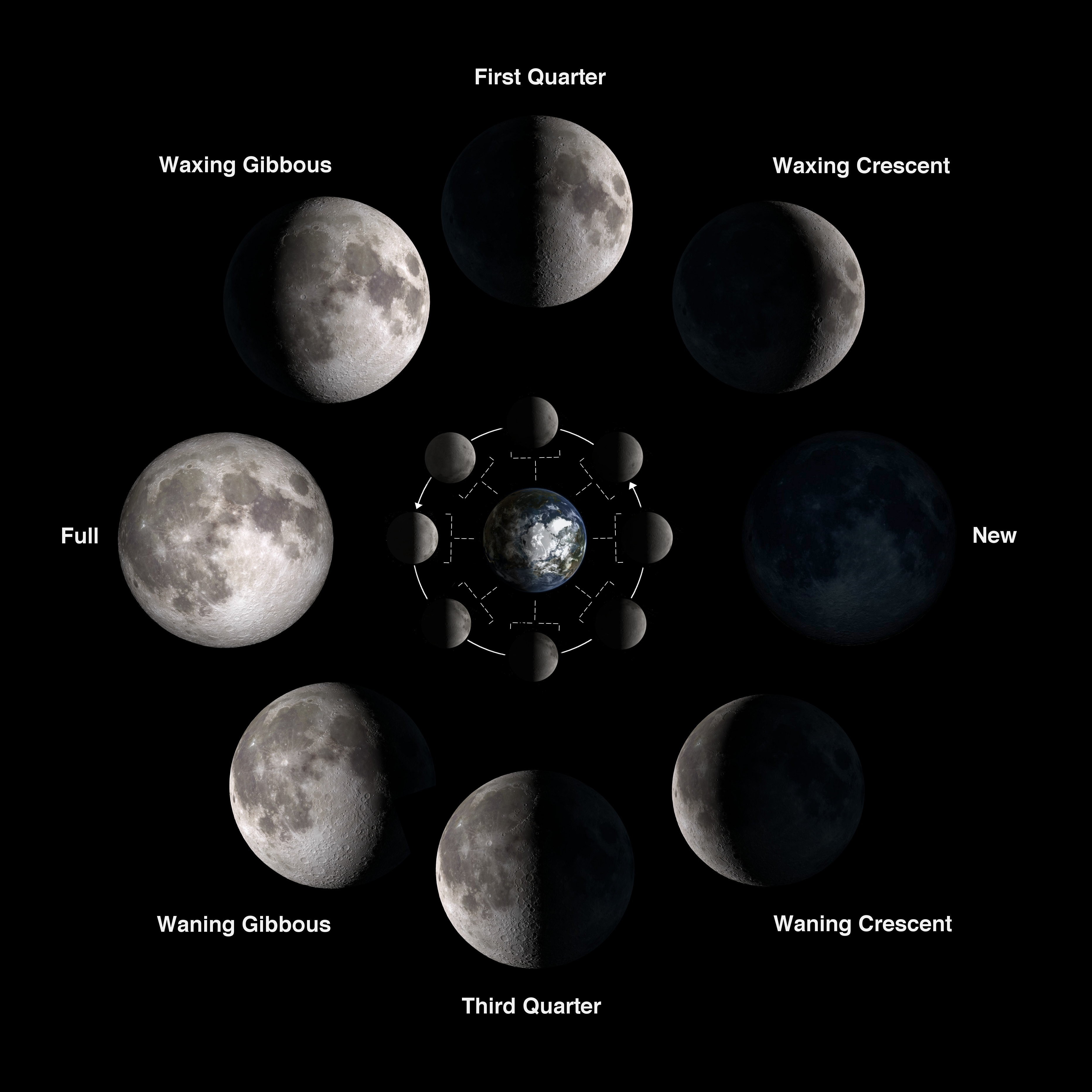Resources
Phases of the Moon

We always see the same side of the Moon, because as the Moon revolves around the Earth, the Moon rotates so that the same side is always facing the Earth. But the Moon still looks a little different every night. Sometimes the entire face glows brightly. Sometimes we can only see a thin crescent. Other times the Moon seems to disappear entirely. As the bright parts of the Moon appear to change shape during the month, each stage of the change is called a phase, and each phase carries its own name.
This chart shows why this happens. The center ring shows the Moon as it revolves around the Earth, as seen from above the north pole. Sunlight illuminates half the Earth and half the Moon at all times. But as the Moon orbits around the Earth, at some points in its orbit the sunlit part of the Moon can be seen from the Earth, and at other points, we can only see the parts of the Moon that are in shadow. The outer ring shows what we see on the Earth during each corresponding part of the Moon's orbit.
You can see the phase, apparent diameter and other motions of the Moon throughout the year 2018, at hourly intervals, as simulated based on images from NASA's Lunar Reconnaissance Orbiter ›


